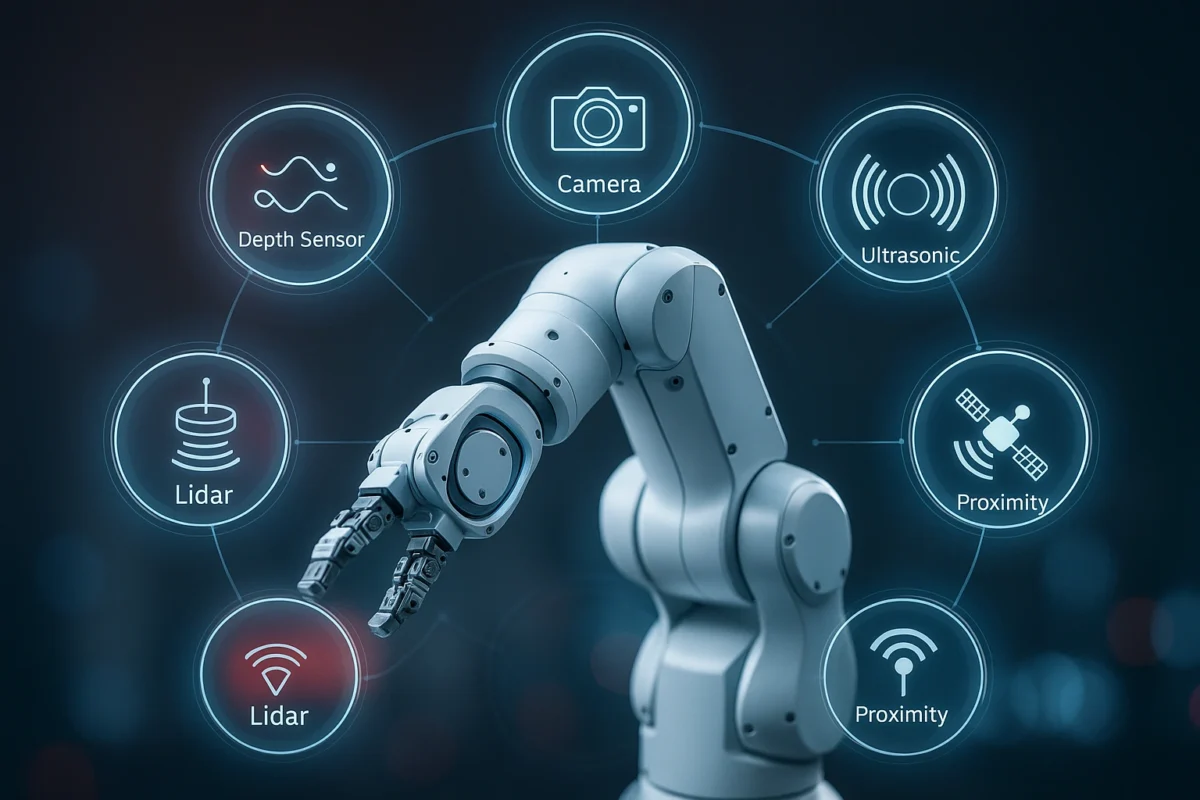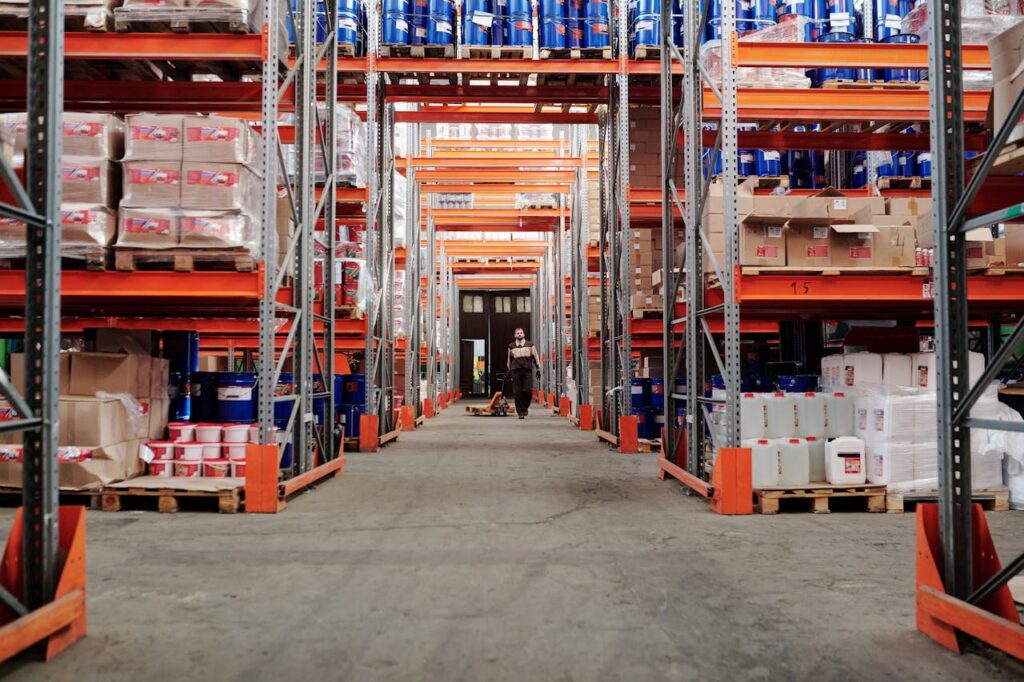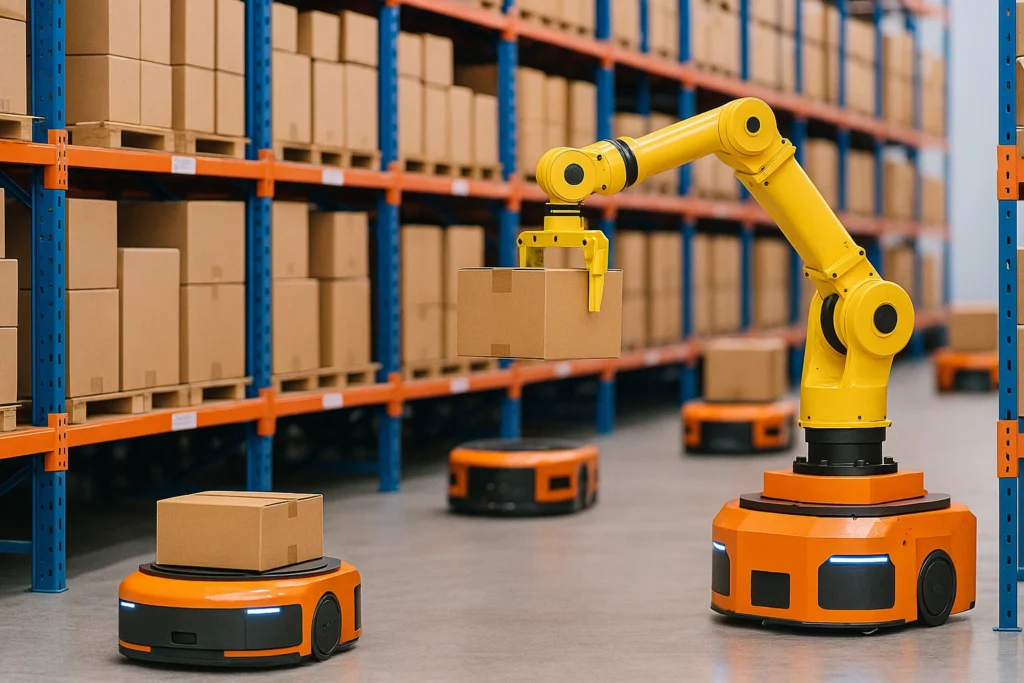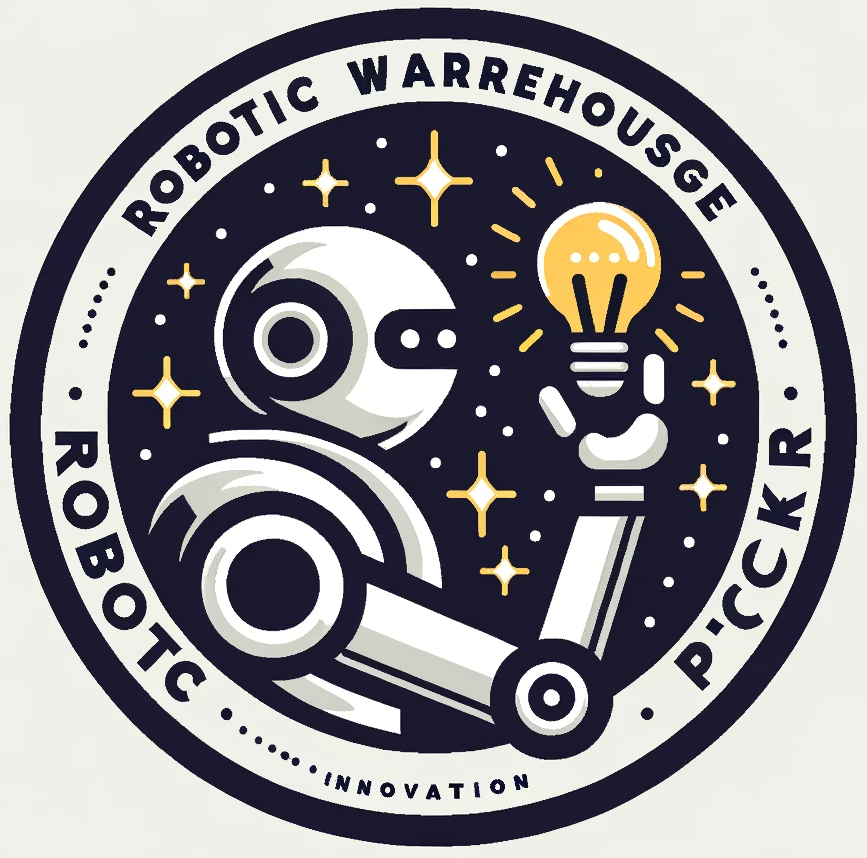Why Sensor Fusion Is the Future of Robotic Picking Accuracy

The world of warehouse automation is rapidly evolving, and at its core is robotic picking. With the explosion of e-commerce and logistics, businesses need to fulfill orders with greater speed and precision than ever before.
However, a robotic arm on its own can only do so much. True accuracy depends on its ability to “see,” and that vision comes from its sensors. This is where sensor fusion comes in. By combining data from multiple sensing technologies, robots gain sharper vision, better guidance, and a level of reliability that was once impossible.
In this article, let’s explore why it’s so essential for the future of logistics.
Let’s dive in.
What Is Sensor Fusion in Robotics?
Sensor fusion is the process of combining data from multiple sensors to create a more complete and accurate view of the environment. A single sensor has limitations like:
- Cameras struggle in poor lighting
- LiDAR can miss small items
- Force sensors can’t identify object types
By merging inputs from vision, LiDAR, depth, tactile, and proximity sensors, robots build a richer model of the world around them. This fusion enables them to:
- Recognize objects with higher precision.
- Track movement in real time.
- Adapt to changes in warehouse conditions.
- Reduce picking errors caused by single-sensor blind spots.
Also See: Cobots vs Robots: What’s Shaping the Future of Work?
Why Picking Accuracy Matters in Warehouses

In logistics, even a 1% error rate in picking can lead to significant costs. Incorrect shipments cause:
- Increased returns and restocking expenses.
- Lower customer satisfaction.
- Delays in supply chain operations.
With global e-commerce growth, warehouses must handle millions of SKUs efficiently. As a result, warehouse picker accuracy is no longer optional. Robotic systems improved with sensor fusion reduce mispicks and accelerate fulfillment.
Key Sensors Used in Robotic Picking
By integrating the below diverse sensors, precision robotic systems achieve the reliability human workers bring without fatigue or errors. The key sensors include:
1. Vision Cameras
High-resolution cameras help robots identify object shapes, colors, and barcodes. They provide the foundation for picker vision AI, allowing item recognition even when items overlap.
2. LiDAR Sensors
LiDAR uses laser pulses to map environments in 3D. It ensures robots know where racks, pallets, and items are located, preventing collisions.
3. Depth Sensors
These sensors measure the distance between objects and the robot, crucial for precision when grasping items.
4. Force & Tactile Sensors
Essential for handling fragile items. They detect grip strength, ensuring a balance between firm grasping and avoiding damage.
5. Proximity Sensors
Short-range detection sensors that prevent accidental collisions when operating in tight warehouse aisles.
How Sensor Fusion Improves Picking Accuracy
Better Object Recognition
A camera might misidentify an item under poor lighting. When combined with LiDAR and depth sensors, the system cross-verifies information, boosting recognition accuracy.
Real-Time Tracking
Items move on conveyor belts and in dynamic warehouse environments. Sensor fusion enables robot guidance tech to adapt instantly, adjusting grasp and movement.
Adaptive Gripping
Force and tactile sensors give robots a sense of touch. When combined with vision data, the robot knows not only what the item is but also how much pressure to apply.
Error Reduction
A single sensor error may lead to a mispick. Sensor fusion introduces redundancy, cross-checking multiple sources for consistency.
Applications of Sensor Fusion in Logistics
Let’s take a look at some of the applications of sensor fusion in the real-world.
1. High-Volume E-Commerce Fulfillment
Large e-commerce warehouses process hundreds of orders per hour. In fact, e-commerce warehouses can process anywhere from 50 to 300+ items per hour. Sensor fusion ensures robots can identify diverse items quickly, minimizing human intervention.
2. Cold Chain Logistics
In frozen or refrigerated environments, human labor is costly and limited. Sensor fusion helps robots function in extreme conditions where visibility and dexterity are challenging.
3. Mixed SKU Palletizing
Robots often need to pick and place different items in a single order. Multi-sensor perception makes this task smoother and more efficient.
4. Hazard Detection
Beyond picking, fusion helps robots detect spills, broken items, or obstacles, enhancing overall warehouse safety.
Also See: Exoskeletons in Robotics: Augmenting Human Strength on the Job Site
Benefits of Sensor Fusion Robotics in Warehousing

Higher Accuracy and Efficiency
The combination of data streams leads to vastly improved accuracy in tasks like item identification, pick-and-place operations, and navigation within complex warehouse layouts. The reduction in mispicks is substantial, as robots can better differentiate between similar items and locate their precise positions.
Lower Operational Costs
Fewer mistakes in picking and sorting drastically reduce the number of costly returns, as customers receive the correct items more consistently. Plus, it also minimizes product waste due to damage or incorrect handling.
Scalable Warehouse Automation
Sensor fusion helps robotic systems to adapt seamlessly to evolving operational demands. As businesses grow, they often face challenges such as an increasing number of Stock Keeping Units, a higher volume of orders, and a demand for faster processing times.
Sensor fusion enables robots to maintain and even improve their accuracy and efficiency despite these growing complexities.
Improved Worker Safety
The integration of warehouse automation sensors with sensor fusion capabilities plays a critical role in fostering a safer working environment. Robots equipped with these advanced sensing systems can detect the presence of human workers and other obstacles with exceptional precision and reliability.
By fusing data from various sensors, the robots gain a more complete and accurate understanding of their surroundings, allowing them to proactively adjust their movements, speed, and actions to avoid collisions.
Challenges of Sensor Fusion in Robotics
While powerful, implementing sensor fusion comes with challenges such as:
Integration Costs: High upfront investments in hardware and software.
Complex Data Processing: Large volumes of sensor data require advanced AI logistics tracking systems.
Calibration: Sensors must align precisely to avoid conflicting readings.
Maintenance: More sensors mean more points of potential failure.
Conclusion
Sensor fusion robotics represents a turning point for warehouse automation. By merging data from cameras, LiDAR, depth, tactile, and proximity sensors, robots achieve unmatched picking precision.
As AI and software evolve, picker vision AI and robot guidance tech will become standard features in warehouses. Businesses that adopt precision robotic systems today are not just automating. They are future-proofing their supply chains.
Looking to explore how sensor fusion robotics can transform your warehouse operations? Check our site for more content.
FAQ – Sensor Fusion Robotics
How does sensor fusion differ from single-sensor robotics?
Sensor fusion combines inputs from multiple sensors to improve accuracy, while single-sensor robots rely on limited data that may cause errors.
Can sensor fusion replace human pickers entirely?
Not immediately. Sensor fusion boosts robotic performance, but human oversight is still needed for complex tasks and exceptions.
Which industries benefit most from robotic picking accuracy?
E-commerce, pharmaceuticals, food distribution, and retail logistics gain the most from improved robotic picking.
Is sensor fusion cost-effective for small warehouses?
Initially expensive, but as technology scales, costs are falling—making adoption easier for medium and small facilities.
